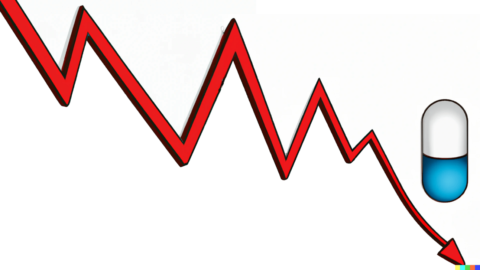It’s been a big week for commercials mocking PBMs as smug, suit-wearing jerks. Here’s PhRMA’s latest, positing that insurance companies are the same smug jerk as the PBMs, only with a different suit.
Last week, I updated my list of the 15 medicines likely to be selected for the next round of IRA price controls. It seems like my 15 predictions were all pretty uncontroversial.
With one exception: AstraZeneca’s lung cancer drug Tagrisso.
Tagrisso is not on my list because I assume it’ll fall under the orphan drug exemption. It did appear on the list pulled together for the ISPOR webinar I wrote about, and I saw some social chatter that also suggested that the medicine would indeed be fair game.
So I feel like the Tagrisso issue deserves a little exposition.
First, the IRA standard is brief, exempting: “A drug that is designated as a drug for only one rare disease or condition under section 526 of the Federal Food, Drug, and Cosmetic Act and for which the only approved indication (or indications) is for such disease or condition.”
CMS played it straight in its implementation guidance: “CMS will exclude a drug or biological product that is designated as a drug for only one rare disease or condition under section 526 of the FD&C Act and for which the only approved indication (or indications) is for such disease or condition. To be considered for the Orphan Drug Exclusion, the drug or biological product must: (1) be designated as a drug for only one rare disease or condition under section 526 of the FD&C Act and (2) be approved by the FDA only for one or more indications within such designated rare disease or condition. A drug that has orphan designations for more than one rare disease or condition will not qualify for the Orphan Drug Exclusion, even if the drug has not been approved for any indications for the additional rare disease(s) or condition(s).”
So the criteria are pretty clear: you can only have one orphan drug designation, and the indication or indications need to fit under that designation. I’m being repetitive here (and italicizing indications) on purpose. Thanks for being patient.
So with Tagrisso, there are two questions to ask.
First, is there just one designation? And here, the answer is clearly yes. Here is the FDA page detailing the single designation: “Treatment of epidermal growth factor receptor mutation-positive non-small cell lung cancer.”
So the second question is whether all of Tagrisso’s indications fall under that designation, with the impact caveat that the law explicitly anticipates that one designation can encompass several indications. Tagrisso’s label includes four indications, all of which are for EGFR+ NSCLC (first-line, second-line, combo, and adjuvant). So all of those appear to align with the one orphan designation.
Ergo: Tagrisso is safe from CMS.
Is there a hole in this logic? Let me know.
AstraZeneca’s first brief in its IRA appeal is out. It’s mostly a rehash of the usual arguments about whether the IRA is a “voluntary” program, but it includes a couple of additional semantic jabs at CMS. AZ makes the case that the agency is playing fast and loose with the definition of “bona fide marketing” and “qualifying single-source drug.” If you’re building a bingo card for IRA-related challenges over the next three years, please make sure it includes “QSSD.” I predict that’s an abbreviation we’re going to start seeing a lot.
There is an old cliche about there being a difference between “data” being different from “information.” As such, this Gallup/West polling about health care affordability is data. It shows that affordability appears to be getting worse in the United States, across the board. What keeps the survey from being “information” is it’s not clear what the factors driving poor affordability might be. The range of potential culprits is so large that it’s hard to direct anger in any particular direction based on this data cut.
I’m curious how long it will take the perspective in this Reuters Breakingviews piece — the idea that obesity medicines are so powerful that they’ll tilt the health economics of the United States — to become conventional wisdom. The data to undergird that argument exists only in small snippets (take the WSJ sleep apnea piece this week as one of those snippets), but the central thesis that there is a lot of savings out there, if only we’re patient enough to see them, is probably going to get more pronounced.
Header image by Katie McNabb on Unsplash.
Thanks for reading this far. I’d be flattered if you shared all or part of Cost Curve. All I ask is for a mention or tag. Bonus points if you can direct someone to the subscription page.





